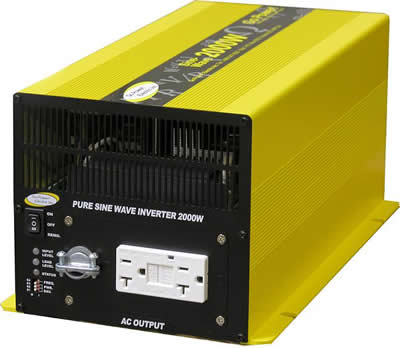
| No. | Proteus Tutorials |
|---|---|
| Give Your Suggestions !!! | |
| 1. | Basics of Inverter With Topology |
| 2. | Major Components of Inverters |
| 3. | Pure Sine Wave Inverter Design With Code |
| 4. | Modified Sine Wave Design With Code |
Hello friends, hope you all are fine and enjoying good health. I have recently posted a project of my friend named as Design & Development of Hybrid Renewable Energy System, which is a pure electrical project.After that project, I thought of sharing some common electrical modules.
So first of all, I am gonna explain all about inverters. I have divided this tutorial into four parts which are shown in the table. This is a step by step guide to design and build an inverter and I hope at the end of this tutorial you guys will be able to design your own inverter. I tried my best to keep it simple but still if you guys got stuck at any point ask in comments and I will solve your query.
What is an Inverter
- An Inverter is an important electrical instrument used to convert DC voltage into AC voltage, its quite easy to explain what is an inverter but its too way difficult to design an inverter.
- In projects, mostly inverter is used to convert the 12V DC voltage into 220V AC voltage, obviously first it is converted to 12V AC and then stepped up to 220 volts (mainly) for the consumers.
Types of Inverters
There are various types of an inverters such as :- Pure Sine-wave inverters.
- Modified sine wave inverters.
- Square wave inverters.
- Multi-level inverters.
- Resonant inverters (etc.).
Modified sine-wave inverters
- The output of a modified square wave, quasi square, or modified sine wave inverter is similar to a square wave output except that the output goes to zero volts for a time before switching positive or negative.
- It is quite simple to design and is compatible with almost every electrical equipment except for sensitive or specialized equipment,e.g. laser printers, audio equipments etc.
- Most AC motors can run on this power source but with reduction in efficiency of approximately 20%.
Sine-wave inverters
- A pure sine wave inverter is the best form of inverter as it produces perfect sine wave and the energy dissipation in it is minimal.
- Pure sine wave inverter is compatible with all electrical devices.
- Its designing is complicated as compared to all other inverters.
Square wave inverters
- The square wave output has a high harmonic content, not suitable for certain AC loads such as motors or transformers.
- Square wave units were the pioneers of inverter development.
Inverter topologies.
- There are many different power circuit topologies and control strategies used in inverter designs.
- Different design topologies address various issues that may be more or less important depending on the way that the inverter is intended to be used.
First Method
- Inverters normally use H-bridge configuration.
- However, the voltage level at which, the H-bridge is operated can be varied.
- The normal inverters convert the DC into AC at 12 Volts.
- After this inversion, this 12Volt AC is stepped up into 220 Volts AC by the means of a transformer.
- The advantage of such an approach is that the bridge construction is easy, as it is not exposed to high voltages.
- The disadvantages accompanying such an approach are :
- The transformer steps up the harmonic content.
- The size and weight of the transformer increases considerably, as the capacity of inverter is increased.
Second Method
- To overcome such problems, we can use a topology of converting DC into AC at the output voltage of the inverter.
- At first, boosting the battery voltages by the means of a DC-DC converter and then giving these voltages toa specially designed Hbridge.
- This arrangement can overcome the previously mentioned disadvantages.
- The main disadvantage of such an approach is that the bridge circuit becomes too complex.




Can you tell me any other IC to produce the square wave, because CD4047 has a constant 50% duty cycle, want a variable duty cycle..
Reply